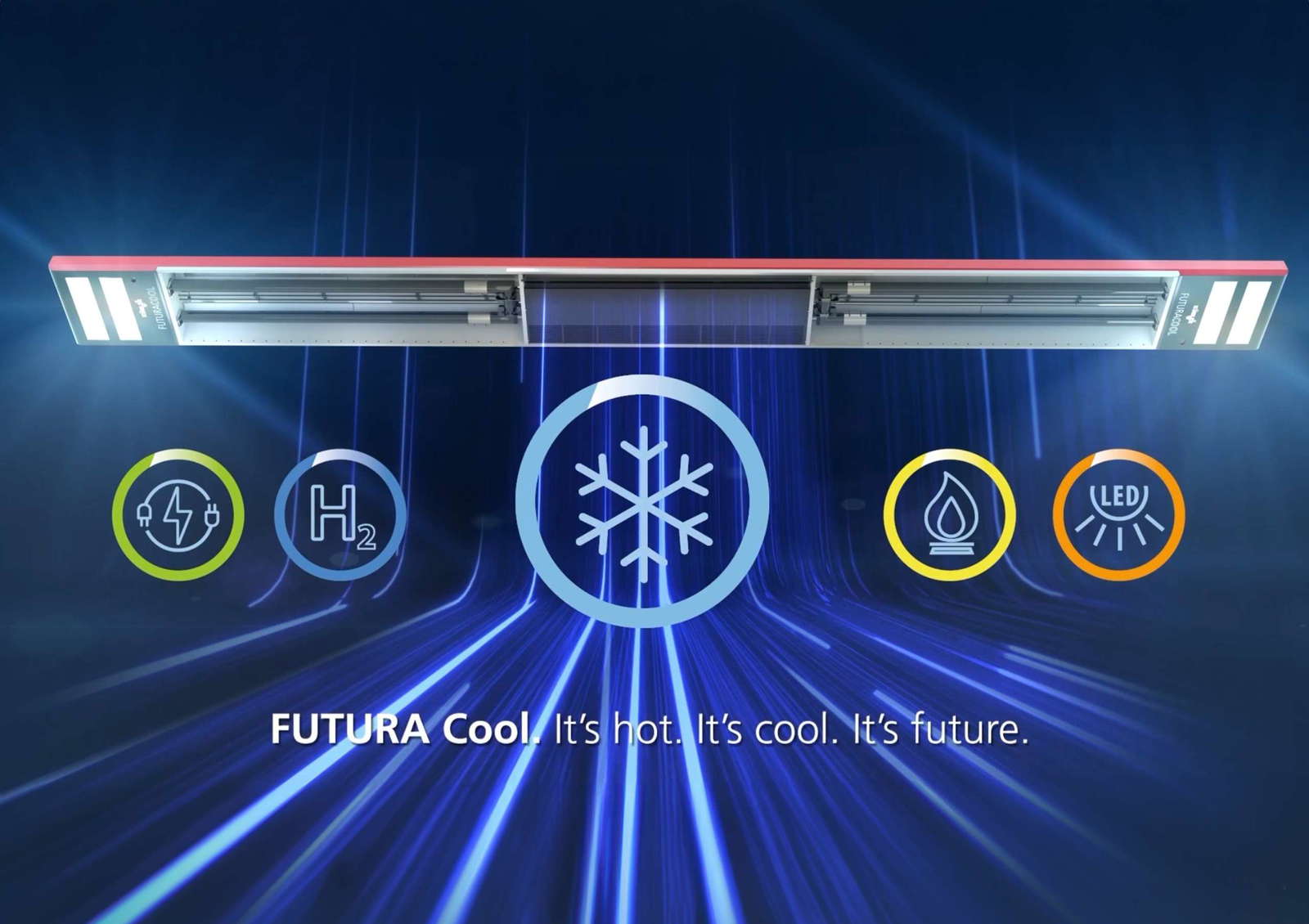Switch to energy sources of the future with KÜBLER

The problem is that renewable energies have so far played a much smaller role in the heating sector than in the electricity sector. According to the Federal Ministry of Economics, they currently only account for just under 14 percent of the heat supply. Far too little for the energy-hungry industry, which consumes almost 530 TWh Energy for heating and cooling applications - for comparison: all private households in Germany combined are only slightly higher at 629 TWh.
But one thing is clear: the energy transition will only succeed if industry also switches to renewable energies for heat generation. This requires energy sources of the future. But what exactly does this mean? Which heating systems are compatible with the architecture and size of industrial buildings and are also energy sources of the future? Find out everything you need to know about this topic in this article!
Which technologies and energy sources of the future can be used to achieve the energy transition in industry?
The demand for heat in industry is more differentiated than in residential buildings. On the one hand, companies require low-temperature heat of up to 100 °C - for heating, drying, cooking or washing processes, for example. On the other hand, high-temperature heat of up to 500 °C is required for industrial processes beyond heating. This distinction is the first major step when it comes to discussing technologies that work with renewable energy sources of the future.
Heat pumps and solar thermal energy, for example, are very well suited to low temperatures, such as for generating hot water or steam. In the future, experts assume that heat pumps will be able to cover a large proportion of the low-temperature heat required in industry. In scenarios from the Federal Ministry of Economics, these devices will supply up to 60 TWh by 2045, while solar thermal systems will supplement this with up to 12 TWh. For the high-temperature range, however, other methods of climate-neutral heat generation can be considered - including direct electrical processes, biomass processes and Power-to-X (PtX).
Heat from biomass: an energy source that will prove itself in the future.äcan lead?
According to the Federal Ministry for Economic Affairs and Energy, the majority of renewable heat is currently generated by burning biomass in solid, gaseous or liquid form. In 2019, 152 TWh of heat was generated in this way - around 86% of the heat provided by renewable energies. At just under 80 TWh, more than half of this was used to heat buildings. Primarily in private households. Industry, on the other hand, uses biomass as an energy source primarily to generate heat for high-temperature processes.
But is biomass an energy source of the future for industry? Opinions are divided here. Due to the high cross-sector demand, many scenarios assume that prices for biomass are likely to rise sharply. Such a price explosion would clearly speak against the future factor, meaning that biomass would not be considered as an efficient energy source in the future.
Large-scale solar thermal energy: an important energy source of the future - but in moderation
Solar thermal systems are an interesting way for industry to generate heat from renewable energies. According to the Agency for Renewable Energies, an average of 1125 kWh of solar energy is generated per square meter in Germany every year. Collectors, which are ideal for installation on the roofs of large halls, make it possible to convert this solar radiation into thermal energy. The collectors usually transfer the solar energy to a frost-proof heat transfer fluid, which transfers the energy to storage water via a heat exchanger. The heat can be used for heating and drinking water. A system that is so effective that solar thermal systems will provide up to 40 TWh of heat by 2045, according to the Federal Ministry for Economic Affairs and Energy - this corresponds to up to ten percent of the total heating requirements of buildings. In comparison: in 2019 it was only 8 TWh. Solar thermal energy is definitely an energy source of the future that has great potential.
But is solar thermal energy also worthwhile for industry? Here, too, opinions differ. Many companies prefer to use their roof surfaces to generate solar modules to produce green electricity. While solar thermal energy is increasingly being used in detached and semi-detached houses, the proportion of large-scale solar thermal energy is currently still low. Nevertheless, a considerable expansion dynamic can be observed. Users often combine solar thermal energy with a second heat generator - such as a heat pump, whose efficiency can be increased by the solar thermal system raising the temperature level.
Geothermal energy: will we extract energy sources from the earth's interior in the future - or not?
Both the energy of the sun's rays and the heat within the earth can be used to provide climate-friendly heating and are seen as energy sources that will become increasingly important in the future. This is where geothermal energy comes into play. Users drill for hot deep water at depths of up to 4,500 meters in order to use it in heating networks or combined heat and power plants. How effective this method is depends heavily on the region. The investment is particularly worthwhile in areas where there is a high demand for heat and favorable geological conditions. However, there is always the risk of not finding heat-storing layers when drilling. This means that the costs and efforts in the search for the energy source of the future may be in vain.
Natural gas: still the dominant energy source - in the future too?
Gas will play a key role in the future of renewable energies. As Germany has developed a large natural gas network in recent years, this environmentally friendly energy source is currently the dominant fuel for heat supply. And the trend is still rising. This is because many players are currently switching from coal-fired combined heat and power generation to gas-fired combined heat and power generation as a result of the coal phase-out. Experts assume that natural gas will still play a significant role in the heating sector in 2030. The medium will accompany the energy transition. And after that? Natural gas is by no means seen as the energy source of the future, but the gas network can still be used - for example for biogas or, with slight technical modifications, for green hydrogen.
Green hydrogen: an important player when it comes to energy sources of the future
There is another energy source that could play an important role in the climate-neutral future: Hydrogen. It is produced through the electrolysis of water when water (H2O) splits into oxygen (O) and hydrogen (H2). If electricity from renewable energies is used in this energy-intensive process, it is referred to as green hydrogen. The corresponding process goes by the name of power-to-gas. Similar to biogas, this green hydrogen can be burned to generate environmentally friendly heat. Infrared heaters from KÜBLER for example, are capable of converting up to 20 percent hydrogen into heat. In combination with a heat exchange system, the waste heat from the heaters can also be fed into the heating circuit return of a pump hot water heating system. In this way, users can recover up to 15 percent of the energy that was previously lost to the environment. Using green hydrogen as an energy source is an excellent way to save costs and protect the environment in the future.
Conclusion: Our view of the energy sources of the future
And which energy sources will the future belong to? There is no single form of energy that can cover the entire heating requirements of industry in a climate-neutral way. Mixed forms will prevail. Direct thermal processes will play a role here - i.e. solar thermal energy, deep geothermal energy and waste heat. The same applies to technologies such as heat pumps or power-to-heat processes that require electricity from renewable energy sources to support them. But regardless of the process and energy source, the energy transition will only succeed in the future if the energy efficiency of industrial buildings improves at the same time. And the Hall heating systems from KÜBLER.
-
"Heating with the windows open" in private households is like "heating with the doors open" in production halls and warehouses. It's great if you can afford this in industry and commerce because production and business are obviously running - unfortunately, this is not a matter of course for many companies in times of coronavirus.
-
Christmas is once again approaching surprisingly quickly - and, unfortunately, one or two challenges are on the horizon. From 3G and 2G plus to the next increases in energy prices. Congratulations if you have already converted your hall heating to an economical system from KÜBLER. This is a really good decision in many respects.
-
While Germany is discussing the energy transition, KÜBLER GmbH from Ludwigshafen has already delivered. FUTURA is the name of the latest invention from the experts for hall heating systems - and it works regardless of the energy source: the infrared heating system for halls uses hydrogen, electricity, gas or a mix of these. It can process green and fossil fuels highly efficiently, thus building a bridge to the carbon-free era. This is one of the reasons why the Investitions- und Strukturbank Rheinland-Pfalz (ISB) and the Ministry of Economic Affairs, Transport, Agriculture and Viticulture awarded KÜBLER the special prize "Innovative Technologies for Climate Protection" at the SUCCESS Innovation Award on Tuesday evening.
-
If you are reading this article, you are probably looking for an efficient way to heat your industrial or commercial building. During your research, you have already come across one or other technology such as dark radiant heaters or hot air. Now you want to know why dark radiant heaters in particular are repeatedly highlighted as especially efficient. We'll tell you!






